Qin Wall
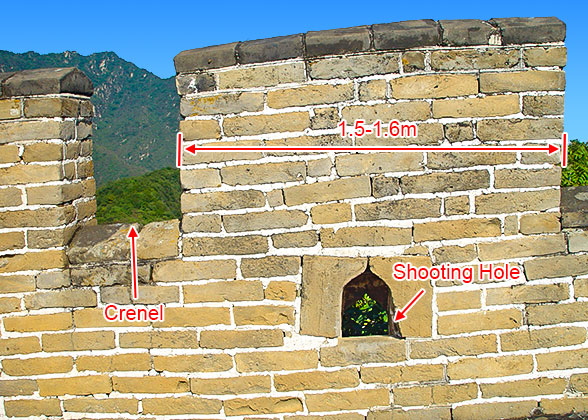 The Qin Wall starts from Liaodong (today's east and south of Liaoning Province) in the east and ends at Lintao (today's Lintao County in Gansu Province) in the west. The wall was built according to the local conditions and used local materials. Generally speaking, the Qin Wall was made of large pieces of stones. Between the stones, huge amounts of detritus was accumulated and filled in. It measures about 4.4 to 5.5 yards. The steep cliffs were used as natural walls after being chiseled a little. In Gobi area, the wall was built by mixing grit with the local plants such as red willows, reeds, and poplars. In flat plains, the wall was built from pounded yellow earth, layer upon layer. Besides connecting the scattered sections of previous states, Qin Wall was augmented with rather complicated military structures such as blockhouses, barriers, passes and beacon towers.
The Qin Wall starts from Liaodong (today's east and south of Liaoning Province) in the east and ends at Lintao (today's Lintao County in Gansu Province) in the west. The wall was built according to the local conditions and used local materials. Generally speaking, the Qin Wall was made of large pieces of stones. Between the stones, huge amounts of detritus was accumulated and filled in. It measures about 4.4 to 5.5 yards. The steep cliffs were used as natural walls after being chiseled a little. In Gobi area, the wall was built by mixing grit with the local plants such as red willows, reeds, and poplars. In flat plains, the wall was built from pounded yellow earth, layer upon layer. Besides connecting the scattered sections of previous states, Qin Wall was augmented with rather complicated military structures such as blockhouses, barriers, passes and beacon towers.Han Wall
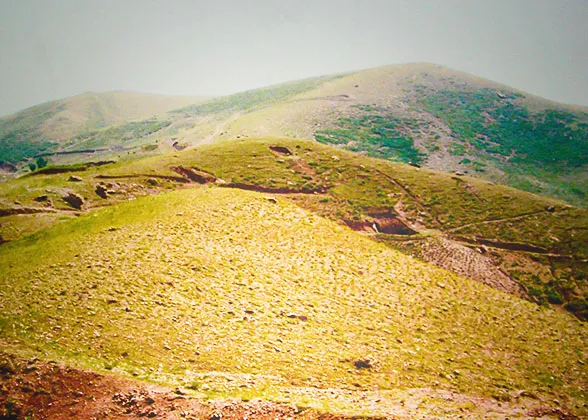 Han Wall followed the basic characteristic of Qin Wall, that is, to build the wall according to the local conditions and used local materials. The difference lies in the constructional types. The Han Wall mainly wound through grasslands where big stones were not available. The compressed earth construction was favored. For example, in Dunhuang, where large amount of bulrush, poplar, red willow and dogbane grew, these were used for wall construction. The branches of these plants served as groundwork which was covered by a layer of sun-dried mud bricks mixed with grit and above was the rammed bulrush. On average, the thickness of the bulrush layer measured 1.6 to 2.0 inches and the grit layer measured 7.9 inches. Remnants of this work remain till this day. The willow branch and bulrush could bear strong tension, and stones and grit were not easy to be destroyed after being compacted in layers, so the wall became rather solid.
Han Wall followed the basic characteristic of Qin Wall, that is, to build the wall according to the local conditions and used local materials. The difference lies in the constructional types. The Han Wall mainly wound through grasslands where big stones were not available. The compressed earth construction was favored. For example, in Dunhuang, where large amount of bulrush, poplar, red willow and dogbane grew, these were used for wall construction. The branches of these plants served as groundwork which was covered by a layer of sun-dried mud bricks mixed with grit and above was the rammed bulrush. On average, the thickness of the bulrush layer measured 1.6 to 2.0 inches and the grit layer measured 7.9 inches. Remnants of this work remain till this day. The willow branch and bulrush could bear strong tension, and stones and grit were not easy to be destroyed after being compacted in layers, so the wall became rather solid.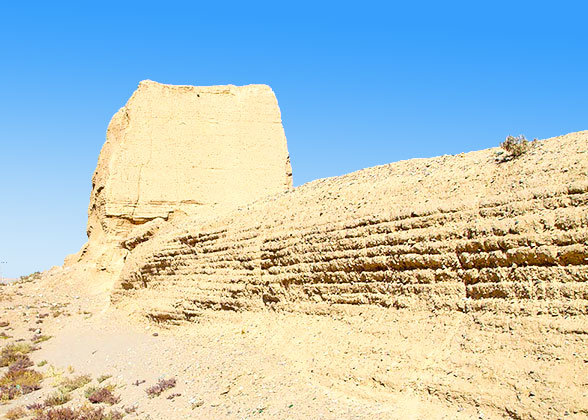 The military system of Han Wall included barriers, beacon towers, strongholds, trenches, castles besides passes and blockhouses. Tiantian, a newly created observation object, was built by placing a layer of silver sand inside the trench. If the Huns dared to set foot in, they would certainly leave footprint on the sand, which would be noticed by sentries. Besides, the strict beacon system was formed in Han Dynasty. The regulation prescribed that a beacon be built at the interval of 1.6 miles, a block at the interval of 3.1 miles, a fortress at the interval of 18.6 miles and a pass at the interval of 62.1 miles. In the daytime, smoke columns were used to warn the coming of attacks. One smoke column indicated that less than one thousand enemies invaded, if more than one thousand enemies attacked, two smoke columns would be raised. Three smoke columns would be lifted in case more enemies came. At night, soldiers would kindle firebrands to warn of coming dangers.
The military system of Han Wall included barriers, beacon towers, strongholds, trenches, castles besides passes and blockhouses. Tiantian, a newly created observation object, was built by placing a layer of silver sand inside the trench. If the Huns dared to set foot in, they would certainly leave footprint on the sand, which would be noticed by sentries. Besides, the strict beacon system was formed in Han Dynasty. The regulation prescribed that a beacon be built at the interval of 1.6 miles, a block at the interval of 3.1 miles, a fortress at the interval of 18.6 miles and a pass at the interval of 62.1 miles. In the daytime, smoke columns were used to warn the coming of attacks. One smoke column indicated that less than one thousand enemies invaded, if more than one thousand enemies attacked, two smoke columns would be raised. Three smoke columns would be lifted in case more enemies came. At night, soldiers would kindle firebrands to warn of coming dangers.Ming Wall
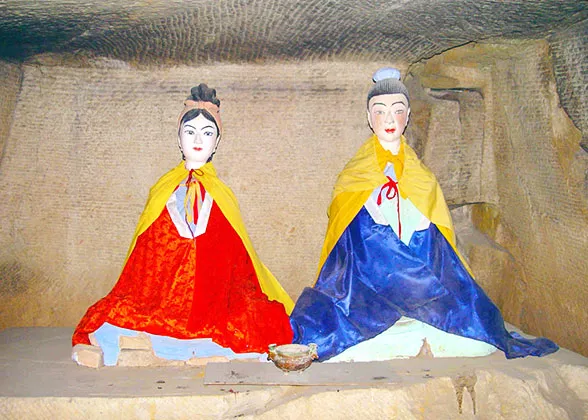 The Ming Wall is the solidest and most complete one compared with walls in other dynasties. The Ming Dynasty drew the experience from the previous dynasties when they built the wall. More important military fortifications were added on the wall. In flat areas, outside the wall, big wide moats were dug to make approach difficult.
The Ming Wall is the solidest and most complete one compared with walls in other dynasties. The Ming Dynasty drew the experience from the previous dynasties when they built the wall. More important military fortifications were added on the wall. In flat areas, outside the wall, big wide moats were dug to make approach difficult.At the interval of 109.4 to 218.7 yards, there located a terrace which protruded from the wall. It was especially designed for close combat. Once enemies were camped outside the wall, soldiers on guard could shoot from the terrace. They could take the advantage of a commanding height to prevent enemies from putting ladders against the wall to attack the city. At certain distances, there was a fortress. It was used for storing up army supplies or stationing troops who controlled a section of the wall nearby and carried out the defense tasks along the wall.
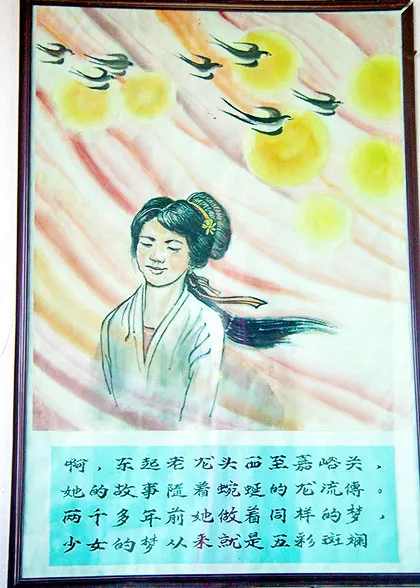 Watch towers were often square in shape and towered above the top of the wall about 13.1 feet. While at places of strategical importance, the watch towers were round and raised high above the wall. They were built for soldiers to live in, to store food and weapons for a long period of time. The Ming Dynasty still raised smoke to warn of dangers. Besides, the boom of cannon was added to strengthen the alarm effect. In ancient times when telephone and wireless communication were not available, this method to transfer the military message was obviously fast. Beacon towers in Ming Wall were also used for ensuring the safety of ambassadors, supplying them with room and board and offering forage for their horses.
Watch towers were often square in shape and towered above the top of the wall about 13.1 feet. While at places of strategical importance, the watch towers were round and raised high above the wall. They were built for soldiers to live in, to store food and weapons for a long period of time. The Ming Dynasty still raised smoke to warn of dangers. Besides, the boom of cannon was added to strengthen the alarm effect. In ancient times when telephone and wireless communication were not available, this method to transfer the military message was obviously fast. Beacon towers in Ming Wall were also used for ensuring the safety of ambassadors, supplying them with room and board and offering forage for their horses.
0 comments:
Post a Comment